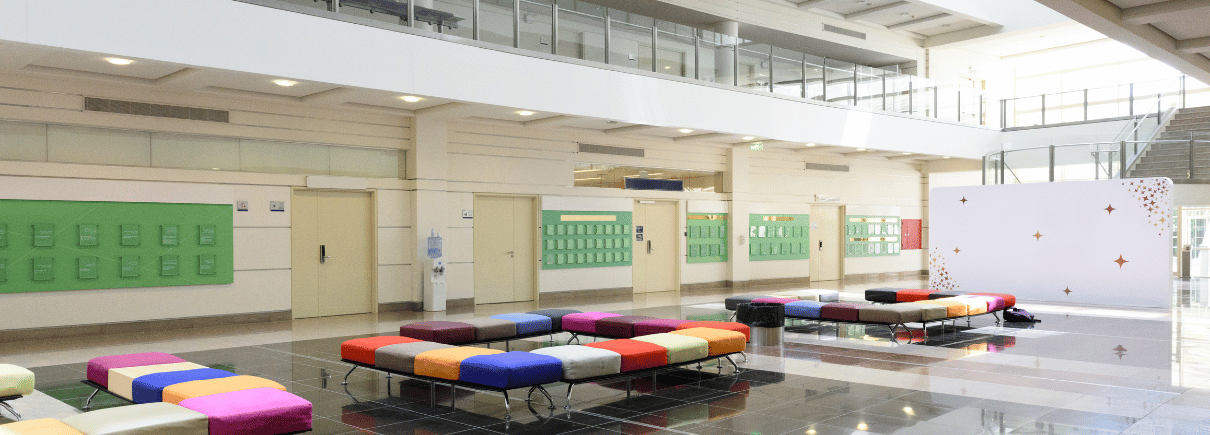Why Economic Regeneration Starts With Community Spaces
Discover how providing community spaces to good causes fuels local economic growth, strengthens neighbourhoods, and adds to social cohesion.
People tend to consider economic regeneration in the context of large infrastructure projects and developments that come from public sector policy. Yet, its starting point actually lies much closer to local property; in community spaces that bring people together, provide growth opportunities, and drive inclusivity. This community focus is why transforming an unoccupied commercial property into a community space often becomes a catalyst for revitalising local economies.
Over the years, ASTOP has created many partnerships between commercial property owners and community organisations. We have learned the vital role such agreements have to play in the economic development of local areas.
The Crucial Role of Community Spaces in Economic Regeneration
The term economic regeneration typically refers to a conscious effort to revitalise local areas experiencing economic decline. This often comes through investment, development, and community-led initiatives. While governments and developers can provide the means to improve an area physically, the success of a regeneration project usually depends on the community itself.
The commonality among all community groups is a shared need for space. Practicalities mean offices, retail spaces, workshops and meeting rooms all play a foundational, however often unseen, role in the process of revitalising a region.
Safe, inclusive venues for collaboration, learning, working and serving the public often make a real difference to local enterprise. More than just buildings, these spaces are platforms for regional innovation, inspiration and leadership. Having a home is a vital step for community-driven initiatives that bridge the gap between social development and economic growth.
Community Spaces Donated From The Commercial Sector and Economic Growth
Traditionally, one of the most evident signs that an urban area is undergoing an economic downturn has been empty commercial properties. In recent years, the situation has shifted. A trend for converting such spaces into assets that community-based good causes, charities, and local not-for-profits can use has unlocked significant economic and social value.
Attracting Investment and Business Opportunities
The reason economic development has changed is the fact that well-utilised community spaces are proven magnets for further investment. When a once-derelict building transforms into a thriving hub of activity, it signals to investors and local authorities that the area is worth more support. Community hubs and co-working spaces mean footfall. People, even by simply passing by, can generate income and give small businesses and local enterprises opportunities to generate revenue.
ASTOP has supported many projects that prove filling otherwise empty units on a local high street, for example, can maintain micro-economies in and of themselves and generate income for surrounding shops and services. By directly offering programmes that support employability or supporting less formal opportunities to volunteer, workspaces contribute to the local pool of motivated workers — a key ingredient for any local economic development initiative. The link between community spaces and local employment is clear. In addition to creating local jobs directly in charity and good cause administration, for example, economic activities, even at a minor local level, provide an accelerator for employment more broadly.
Encouraging Local Spending and Economic Flow
Creating new office space, establishing a workshop or revitalising a retail unit inherently leads to economic activity – people travel, buy coffee, grab a sandwich, pick up a few groceries or look for local places to socialise, for example. This new economic focus not only helps local entrepreneurs but also circulates money within the community. Spending locally is one of the most important tactics available to those responsible for promoting sustained economic growth. Any formerly empty commercial property that can become a destination and attract visitors is ideally placed to support economic flow through and within a community, which is essential for growth.
Reducing Costly Decay and Deprivation
Leaving properties vacant comes at a cost, not just to the owner, but to the broader community, too. Empty buildings can attract antisocial behaviour, increase maintenance and security risks, and contribute to the feeling of community decline. By letting spaces, even for no or token rent to trusted charities or community organisations, landlords significantly reduce these liabilities. Occupied spaces that are well-maintained and used productively reduce overall costs and contribute to safeguarding the value of local property. Well-used community spaces deter crime and support the local environment by injecting activity, care, and purpose back into areas that would otherwise risk falling into decay. Importantly, the costs of deprivation are proven to grow over time.
The Social Impact of Community Spaces on Local Development
It should be clear that the actual value of community spaces is a matter of social regeneration rather than pounds and pence in isolation. Donated workspaces nurture relationships, support vulnerable groups, and foster a newfound sense of place within populations by opening doors to the potentially economically excluded. Donated offices and workspaces help populations feel seen, heard, and valued; all essential steps in building resilient communities.
Improving Social Cohesion and Reducing Inequality
For areas experiencing hardship or isolation in particular, finding a practical use for empty commercial property can offer community lifelines, supporting networks, guiding services, and establishing peer connections that may otherwise not be available. New social infrastructure reduces inequalities and improves community well-being.
Strengthening the social fabric of a neighbourhood through donating charity office space for communities and similar contributions is often key to long-term economic growth and sustainable redevelopment. Success comes through creating communities that are both economically active and socially connected.
Increasing Civic Participation and Community Engagement
New community spaces are proven to cut across generational, ethnic, and socioeconomic societal divides to reduce social isolation and strengthen communal bonds. Property owners can create environments where people from different backgrounds can engage, collaborate, and form meaningful partnerships. Success often begins with creating property partnerships for community regeneration, specifically.
Built in this way, civic participation helps bridge gaps between cultures, age groups, and income levels, for example. The impact is especially significant for vulnerable populations, where repurposed office or retail spaces can provide more than just a roof over one’s head; they offer a sense of safety, personal dignity, and a welcoming place to seek help. These hubs can support vital services, but equally, they may simply provide a safe, warm space for communities to gather and be heard. In this way, community spaces are amongst the best tools we have to help individuals and groups to participate and engage with local redevelopment initiatives. Landlords supporting community spaces often report a range of unexpected people-based rewards alongside the economic ones.
Creating Social Enterprises and Sustainable Business Models
Projects that start providing charity office space for communities often evolve into platforms for social enterprises, businesses and economic entities. Business hubs in community developments should always be actively considered. They make a vital contribution to micro-level economic growth. They are the types of organisations that typically thrive in shared spaces, pop-up shops, and flexible workspaces provided at low or no cost. For instance, a disused retail unit on a struggling high street can be transformed by stakeholders into a co-working café, for example, or a marketplace where local traders can showcase themselves and their products. In these circumstances, community space acts as an anchor point for economic and social activity, demonstrating a successful blend of business and community objectives. Local business regeneration needn’t purely be driven by financial reward, and, ultimately, the economic benefits of community spaces are broad and expansive
ASTOP’s Role In Creating Property Partnerships For Community Regeneration
ASTOP brings community engagement and economic development stakeholders together to create partnerships between landlords and community groups. Our goal is always to bring unused commercial properties back into socially purposeful use. Our approach is built on mutual benefit: landlords reduce their costs and risks, while communities gain access to vital infrastructure.
We assess vacant units and identify local charitable or community-led organisations that can use them to deliver services and activities. As we’ve proved in this blog, our work not only breathes life back into disused properties but also enables meaningful economic and social progress in the communities where we work. In our experience, it is difficult to overstate the social impact of community spaces and carefully managed local business regeneration.
Whether supporting a charity to establish a food redistribution centre or helping social enterprises scale their operations, ASTOP plays a vital role in linking opportunity with need and representing property owners with space to offer.
Contact ASTOP’s director, Shayelsh Patel, to learn more about our work revitalising local economies and creating impactful community spaces.
Explore More
If you’re interested in charity leasing, you might find our other blogs of interest: The Role Of Charity Office Space In Community Development, How Benefits Can Benefit From Short-Term Leases With Charities, and Financial Benefits For Landlords Supporting Charities.






